Southwest Michigan field crops update – March 31, 2022
Warmer soil temperatures in March point to the possibility of a relatively early planting season but forecasted precipitation may keep farmers out of fields for the first part of April.

Weather
Temperatures this winter were near normal for southern Michigan, although December was well above normal while the first 60 days of 2022 were 2-4 degrees Fahrenheit below normal. The forecasts from the fall, largely based on La Niña models, overestimated the temperature for southern Michigan compared with actual measurements. The trend for winter temperatures in the upper Midwest has been increasing with this past winter being roughly 1.5 F warmer than the 126-year average. Although there is significant year-to-year variability, the overall trend has shown an increase of over 3 F from 1896 to 2022.
Soil temperatures are currently hovering around 40 F after having cooled off from the late-March warm-up, but they are still warmer than average for this time of year—see the Michigan State University Extension article, “Soil temperatures and planting timing – Part 2 of 3: Tracking soil temperature trends,” for a soil temperature history for south-central Michigan. With near-normal temperatures predicted for the first half of April, it does not appear that soil temps will be the limiting factor in timely planting this spring. The last freeze date for southwest Michigan has historically been sometime in the last half of April or the first half of May depending on location, but an early May freeze has been more common than not these past several years.
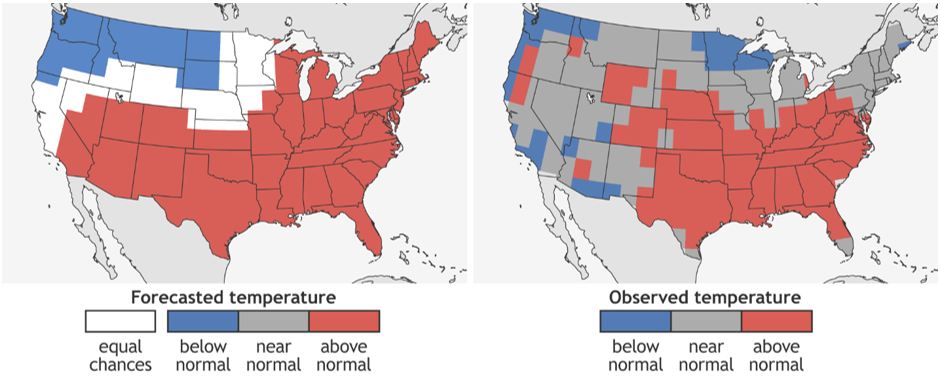

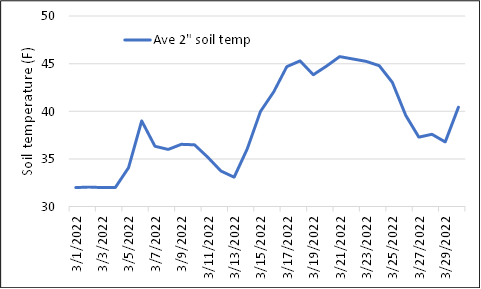
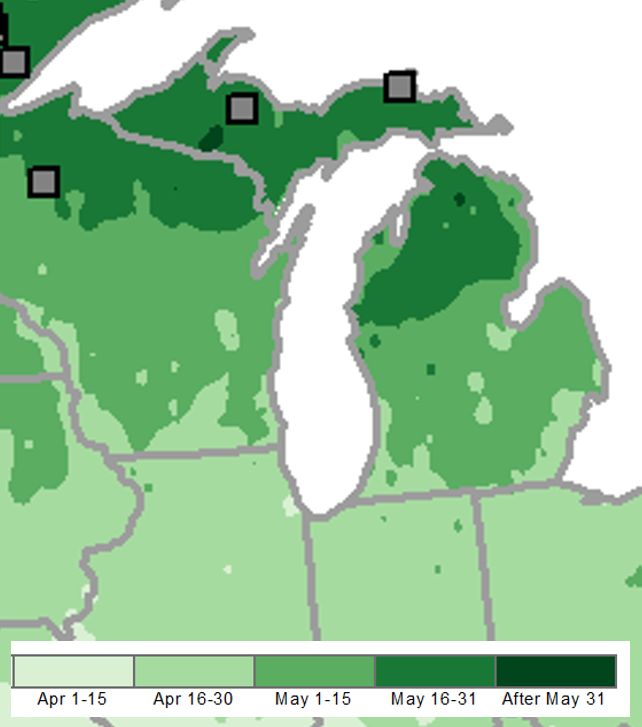
Precipitation this winter has also been near normal, although similar to temperature, December was an anomaly with drier than average conditions while January and February were slightly wetter than average. Opposite of temperature, forecasts from the fall underestimated the precipitation for southern Michigan compared with actual measurements. Precipitation in March ranged from up to 25% below normal to over 50% above normal in the region with actual measured amounts from 1.6 inches (Scottdale) to 3.5 inches (Fennville) and an average of 2.8 inches (water equivalent). The forecast calls for 1.0-1.5 inches rainfall in addition to what has fallen overnight Wednesday. Most of that is predicted to fall early- to mid-week next week although there is a strong change of as much as 0.2 in this Saturday. The 6-10 day outlook calls for normal temperatures and 40-50% chance of above-normal precipitation.
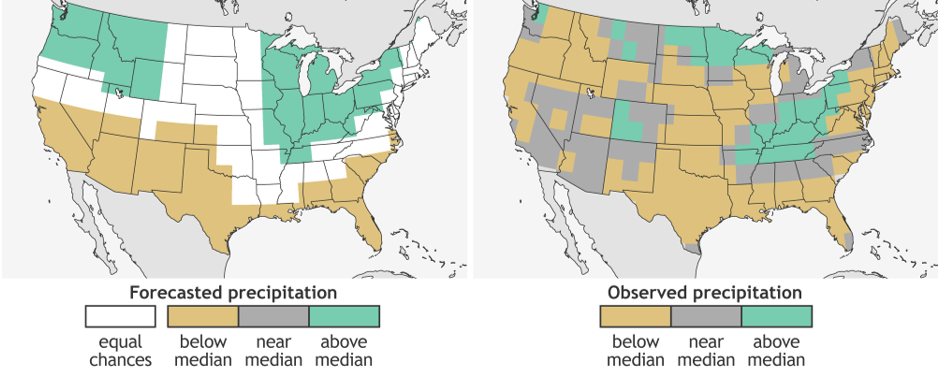


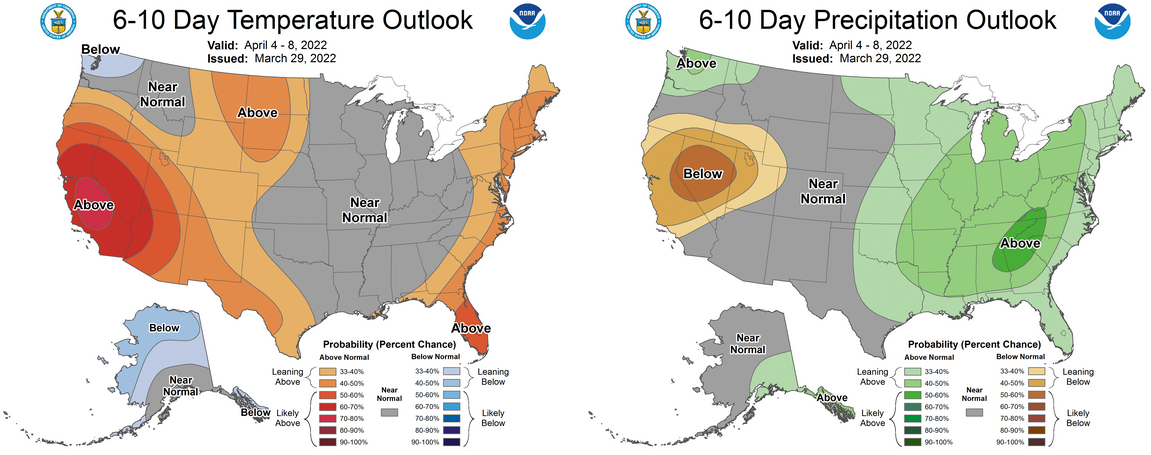
Crops and pests
Wheat, hay, cover crops and other overwintering plants (yes, including winter annual and perennial weeds) have broken dormancy and have been growing since earlier in March. Although we had an unusually warm day during the first week of March, temperatures were consistently in the 30s and 40s during the third week. According to Purdue Extension, wheat will break dormancy once temperatures consistently stay in the 30s and 40s. This is a good time to scout fields to determine the extent of any stand loss due to ponding/freezing that occurred in February and March.
Early-season weed control was the topic of this week’s MSU Extension Field Crops Virtual Breakfast with weed specialist Christy Sprague. She explained why controlling weeds early and starting clean is important to avoid problems with larger weeds interfering with tillage and planting and competing with crop seedlings for moisture, light and nutrients. She referenced a study they conducted several years ago showing 6.7, 8.3 and 9.2 bushels per acre loss on soybean when delaying weed control until unifoliate, V1 and V3 stages, respectively, compared with controlling prior to or at planting. At $16 soybeans, waiting too long to control weeds could end up costing $100 or more in yield per acre this year.
With limited supplies and higher prices for herbicides like glyphosate and glufosinate, it will be important to identify effective alternatives for commonly used burndown herbicide programs. Sprague outlined numerous options for both corn and soybean that avoid the use of or include lower rates of glyphosate. She also explained why including herbicides with residual activity is extremely important as a foundation program to reduce the number of weeds present for postemergence applications. She said caution should be used to apply preemergence products prior to soybean emergence whereas there is more flexibility with many products used in corn. Several useful tables and other valuable information can be found in MSU’s 2022 Weed Control Guide for Field Crops (E0434) available for free online as a pdf or in print version from the MSU Bookstore.
Sprague also explained why spring tillage will be a key alternative to a herbicide burndown this year for many farmers. Timing is key as controlling large weeds with tillage is particularly difficult, and vertical tillage is not effective for weed control as roots are not effectively disturbed. Caution also needs to be taken not to till when soils are too wet to avoid compaction.
If you were not able to join the session, the recordings will be closed-captioned and available at the Field Crops Virtual Breakfast webpage and the MSU Extension Field Crops Team social media platforms: Facebook, Spotify, YouTube, Apple Podcasts and Twitter.



 Print
Print Email
Email




